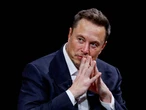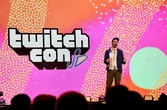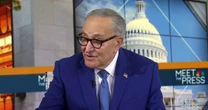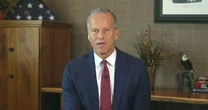A young couple is casually hanging out in an apartment. The girl takes a fork full of food off a plate, as the young man asks, “Good?” She nods, furrowing her brow in a way that signals slight surprise that she’s impressed. “Really good.”
As “Fool” by Perfume Genius fades in, the white text of a ChatGPT prompt overlays on the frame: “I need a recipe that says, ‘I like you, but want to play it cool.'”
ChatGPT’s answer? Lemon Garlic Pasta with Cherry Tomatoes.
This is one of a series of new ads in OpenAI’s first major brand campaign for ChatGPT. The spots depict everyday uses of ChatGPT, from finding recipes, to sourcing exercise tips, to road-trip planning. It’s a stark departure from the brand’s only other commercial, which aired during the Super Bowl, and lacked any real emotion.
Now, about seven months later, after building up its internal creative team, OpenAI is releasing work that’s capital-A advertising, aiming right at our hearts and minds. And it’s exactly what the company needs at this pivotal moment, as the race to attract users heats up in the AI category.
“It’s important for people to understand that we’re in this true technological revolution, and we don’t all have the same vision for how this will go,” says OpenAI chief marketing officer Kate Rouch.
Winning hearts and minds
According to OpenAI, 70% of users say ChatGPT helps them in their daily life. This first campaign aims to showcase the ways those people are already using the technology—and more importantly, it’s a way to get the other 30% to find value in the product.
“Just unlocking these small, meaningful moments, people are really feeling this kind of collaboration, this partnership in many areas outside of work productivity use cases, and we really feel like we have an opportunity to highlight that,” says Rouch. “It can be so easy to think of this as a one-to-one technology, but what we really see is that people are using it as a booster for their lives in ways that are social and very connected to so many things that they want to do.”
OpenAI is hoping that tying its brand to these small, meaningful moments will be a key differentiator in what is quickly becoming a crowded and competitive market for our AI loyalties.
AI brands everywhere
ChatGPT quickly established itself as standard bearer among LLMs after its launch in 2022. The platform now boasts more than 700 million global weekly active users. This new campaign reflects an increasingly competitive landscape among the likes of giants like Google, Meta, and Microsoft, as well as fellow AI-era companies like Anthropic. (Google’s Gemini app has 450 million global monthly active users, while Claude has more than 30 million.)
Earlier this month, Anthropic launched its own new, splashy ad campaign for Claude called “Keep Thinking.” Created by agency Mother, it’s a stylish hype reel of how AI can solve big problems—creative, technological, and everything in between. Meanwhile, Google’s recently launched a new campaign for its Pixel 10, which highlight’s Gemini’s own everyday uses.
Rouch recognizes the competition, and says the brand team has a responsibility to illustrate both product differences and company values. “I think it’s about communicating with people about what our vision of that future is, how we see this technology empowering and enabling people in their lives—in very big and small ways,” she says.
To do that, Rouch has been steadily building OpenAI’s in-house marketing team. In the past couple of months, the brand has named Omnicom’s PHD as its first global media agency of record, and hired Michael Tabtabai (formerly of Coinbase and Google) to be its first vice-president of global creative, as well as Brandon McGraw, who most recently led Anthropic’s consumer marketing, as its head of product marketing for apps.
Rouch says that the internal creative team has evolved from one led by primarily brand design, into a more full-fledged internal creative studio. “We really have found that the best work happens when you have a really strong internal studio that you can partner around the world with amazing external agencies and creatives.”
Just ChatGPT It
OpenAI is quick to say that while ChatGPT was used to brainstorm ideas, streamline logistics, and more, the campaign was shaped by a team of very human creatives, directors, photographers, and producers. A spot like “Dish,” makes the human element here palpable. It also hints at the potential for OpenAI to become an iconic brand like Nike, with the right mix of style and substance.
The music, casting, and product storytelling are pitch perfect in OpenAI’s campaign. The opportunity is for Rouch and her team going forward is to mix this type of quotidian relatability with more aspirational and advanced uses of ChatGPT. Nike has a playbook for this approach. Just look at how the company can straddle the epic talent of world class athletes like A’ja Wilson and Caitlin Clark, with the more earthbound but no-less emotionally stirring story of a last place marathon finish.
OpenAI is clearly trying to set the tone of who it is as a company and brand. By tapping into human stories and emotion, the company is attempting to build goodwill towards its product.
“Part of the company’s mission, and the original mission of launching ChatGPT at all is so that regular people can have access to this powerful intelligence as it is being developed,” says Rouch. “That is actually core to why the product exists, and the mission of the company. In our perspective as a brand, this isn’t a replacement for humanity, this is a tool to aid humanity.”
The ongoing brand challenge in that is to make sure those values aren’t just a hallucination.











No comments